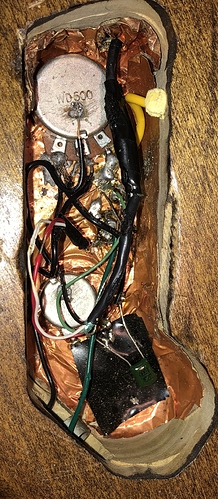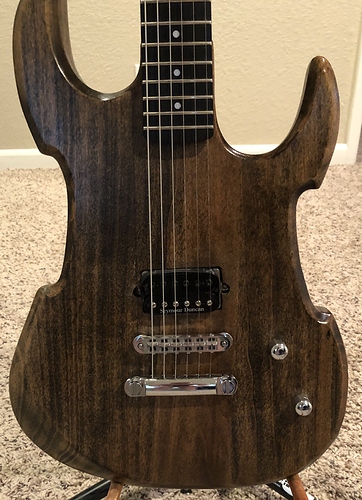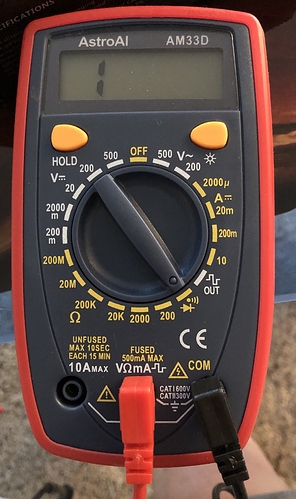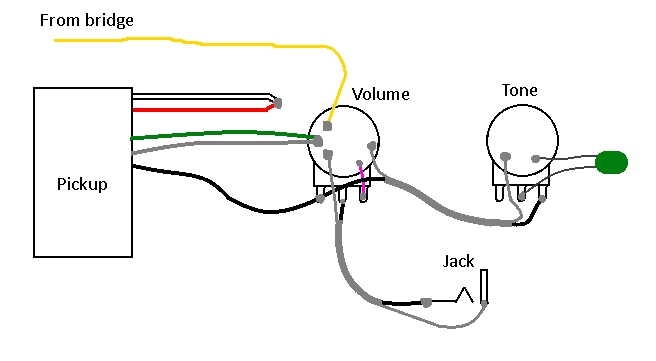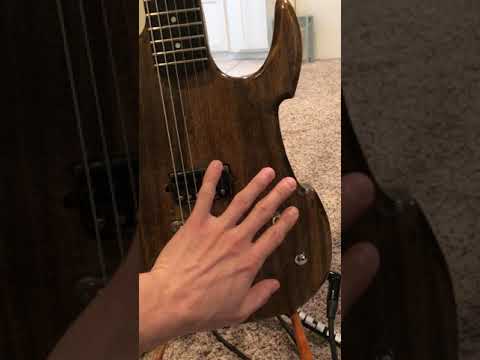Hey guys,
I made an electric guitar body in high school (bought the neck from Carvin). I’ve been mostly happy with it (been almost 15 years) but it’s always had a buzz that I could never make sense of. It’s like there’s a loose ground or something but everything seems solid and as far as I can tell, I have it all wired correctly (but obviously something is wrong). The buzz isn’t super obvious when playing but does make everything sound less clean than it actually is. The only clue I have is that the buzz goes away when I touch the volume or tone knobs. I’m hoping someone out there with a bit more experience with wiring can help me identify the problem.
I’ve included a picture of the wiring cavity below as well as a description since the cavity is a bit of a mess and the guitar only has one pickup with no toggle switch.
- The pot on the top is for volume and of course the one on bottom is for tone.
- The bottom left corner is the jack
- The yellow wire is connected to the bridge and soldered to the copper tape (when I made it, I was told that this wire and the copper tape would help prevent feedback but maybe it’s the problem?)
- The black wire coming from the top is the bundle coming from the pickup (Screamin Demon from Seymour Duncan)
- The white and red wires coming from the pickup are soldered together and taped off with electrical tape.
- The green and bare wires coming from the pickup are both soldered to the copper tape lining the cavity.
- The small black wire coming from the pickup is wired to the outer prong (left side of the picture) of the volume pot. That same prong has another wire (black) going to the outer prong (right side of the picture) of the tone pot.
- The middle prong of the volume pot is going to the jack and the outer prong (on the right side) is soldered to the copper tape.
- The volume pot is also connected to the tone pot via a single wire soldered to the top of each (thinking about when the buzz goes away, this seems like it could be the problem)
- The middle prong of the tone pot is soldered to a capacitor which is soldered to the copper tape.
I think that’s everything.

